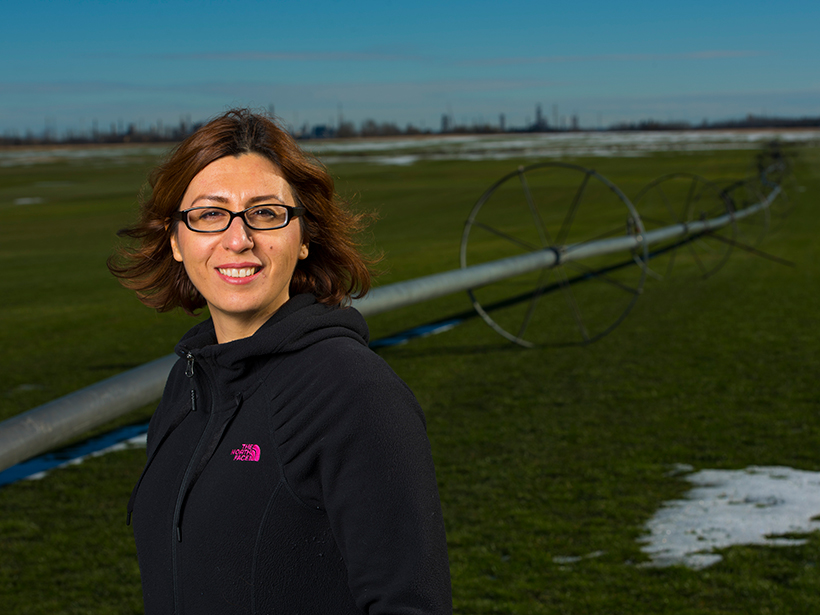
In 2008, British geographer John Anthony Allan received the Stockholm Water Prize for developing the concept of virtual water. The concept of virtual water proposes that when goods and services are exchanged, the water involved in making those goods and services is exchanged, too.
Accounting for the “hidden” amounts of water that go into the production of exported goods has gained currency as a way of informing policy to address the exchange of resources between the water-haves and the water-have-nots. For example, when a country imports a metric ton of rice instead of producing it domestically, the importing country saves about 2,291 cubic meters of water—the amount of water it takes to produce the crop. If the importing country is a water-have, the savings may be negligible. If the importing country is a water-have-not, however, the water saved could be directed toward endeavors such as health and hygiene.

Yet for at least a decade, the concept of virtual water trade has come under scrutiny. Some argue that integrating the concept of virtual water into policymaking decisions empowers water-have regions and corporations, which benefit from water-rich exports such as grain and cotton. Others acknowledge that the virtual water trade has limited influence when water-haves are not fixed—when water availability might be unevenly distributed within a water basin over the course of a year or many years. Conservationists recognize that virtual water does nothing to address environmental concerns surrounding extraction and sustainable use.
In research presented at AGU’s Fall Meeting 2020, scientists from the University of Alberta in Canada added their voices to those finding the concept of virtual water trade problematic.
Redefining Risks to a “Water-Have”
The new study used the Soil and Water Assessment Tool (SWAT), a model that enables researchers to simulate physical processes involved in the water cycle, to analyze historical and future virtual water exports from Alberta. Researchers used SWAT to model export potentials between 2040 and 2065 and their impact on the province’s water yield. The study found that if Alberta devotes its considerable agricultural lands to only wheat, barley, and canola, its annual average export potential of virtual water might significantly exceed its actual annual water yield, potentially putting the province in trouble.
“While model results showed [that] warmer temperatures and a shift in precipitation and snowmelt in higher latitudes may favor crop production, the potential [virtual water] flows indicated that they may far exceed local water renewals, which may require changes in land use and policy decisions in the future,” said Badrul Masud, a postdoctoral research fellow at the Watershed Science and Modelling Laboratory (WSML) at the University of Alberta and the study’s lead author.
“[Alberta’s agricultural products] have impacts, they have footprints that can affect the natural water cycle and the distributions and the quality of water over time and space.”
That Canada, a nation that holds 20% of the world’s total freshwater resources and 7% of the world’s renewable freshwater, might face water issues sounds like hyperbole, but not so much if you look at the bigger picture, said Monireh Faramarzi, who supervised the study. Faramarzi leads the WSML and is an associate professor at the University of Alberta.
“We export food to over 150 countries around the world almost every year. Only Alberta exports wheat, barley, canola, and more,” Faramarzi said. But agricultural products like these are among the most water- and land-dependent commodities a region can export. “They [agricultural products] have impacts, they have footprints that can affect the natural water cycle and the distributions and the quality of water over time and space.”
By 2050, global food demand might increase by anywhere between 59% and 98%. Exporting countries like Canada would need to speed up agricultural production, including expanding farmland, to meet soaring demand. “This expansion can increase the negative impacts on water quantity and quality and damage the environment,” said Faramarzi.
Climate change will likely augment water stress. “Global climate models predict warmer temperatures in this cold region, making it seemingly good for agriculture,” Faramarzi explained, “but things are only made worse as water consumption can dramatically rise and footprints escalate.”
The new research also indicates that importing countries can be harmed by policies based on virtual water trade. Water-scarce countries like Iran may suffer as local farmers are forced to raise their prices to compete—often unsuccessfully—with cheaper, imported goods from water-rich regions. “This leads to unemployment and other socioeconomic issues,” Faramarzi said.
From a Global to a Regional Approach
The solution is not to discard the notion of virtual water trade entirely, the Alberta researchers said. Instead, they proposed, we should shift its focus from the international stage to the intraregional one. “What if only within the Canadian Prairies, where wheat and barley are grown everywhere, we restructured the cropping pattern, producing wheat or barley just in northern farmlands where warming temperatures and fertile soils yield more of these crops, and grew other, more productive crops in the southern farmlands, and then traded crops in-between them?” Faramarzi asked.
This regional strategy could balance out potential surpluses and deficits within the Prairie Provinces. “It could help tackle not only physical water scarcity but also water quality issues while meeting global demands,” Faramarzi said.
Raghavan Srinivasan, a professor and director of the Spatial Sciences Laboratory at Texas A&M University who was not involved in the new research, said the Alberta study is a good step in the right direction. Srinivasan finds centering the research in Canada slightly limiting, however, because the country still has “about 100 years or more before it starts to see some real environmental problems.” Regardless, he thinks the researchers are developing a sound methodology applicable everywhere, “from Brazil to Iran.”
—Stav Dimitropoulos ([email protected]), Science Writer
Citation:
Dimitropoulos, S. (2020), Should global virtual water trade go local?, Eos, 101, https://doi.org/10.1029/2020EO152841. Published on 17 December 2020.
Text © 2020. The authors. CC BY-NC-ND 3.0
Except where otherwise noted, images are subject to copyright. Any reuse without express permission from the copyright owner is prohibited.

